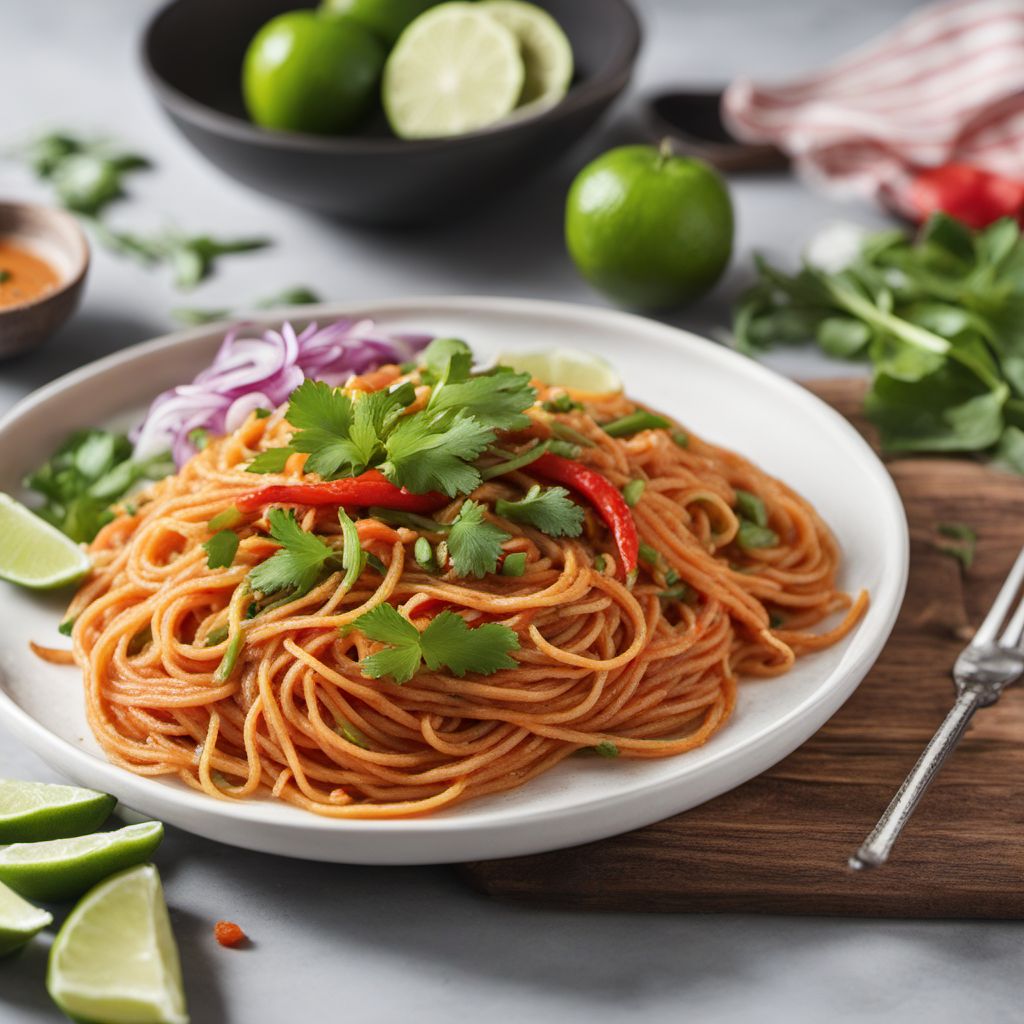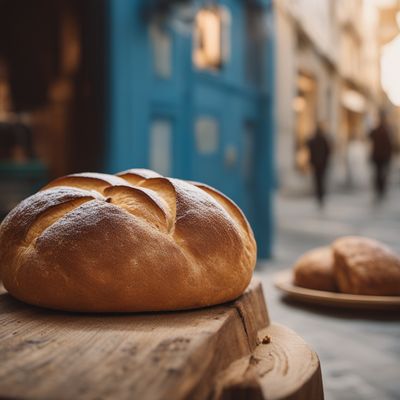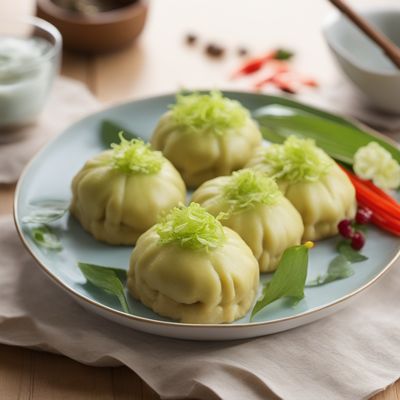
Recipe
Thai-style Spaghetti with Coconut Curry Sauce
Coconut Curry Spaghetti: A Thai Twist on a Classic Pasta Dish
4.7 out of 5
Indulge in the vibrant flavors of Thai cuisine with this unique twist on a classic pasta dish. This Thai-style Spaghetti with Coconut Curry Sauce combines the comforting elements of spaghetti with the aromatic spices and creamy coconut flavors of Thai cuisine.
Metadata
Preparation time
20 minutes
Cooking time
15 minutes
Total time
35 minutes
Yields
4 servings
Preparation difficulty
Easy
Suitable for
Vegetarian, Vegan (if using vegan spaghetti), Gluten-free (if using gluten-free spaghetti), Dairy-free, Nut-free
Allergens
Soy (in the soy sauce)
Not suitable for
Paleo, Keto, Low-carb, High-protein, Whole30
Ingredients
In this Thai adaptation, the traditional Greek dish of Spaghetti me anthotyro is transformed into a Thai-inspired delight. The original dish typically features spaghetti tossed with anthotyro cheese, olive oil, and herbs. In this Thai version, the cheese is replaced with a creamy coconut curry sauce, and the herbs are substituted with aromatic Thai spices. The result is a completely different flavor profile that combines the best of both Greek and Thai cuisines. We alse have the original recipe for Spaghetti me anthotyro, so you can check it out.
-
250g (8.8 oz) spaghetti 250g (8.8 oz) spaghetti
-
1 tablespoon vegetable oil 1 tablespoon vegetable oil
-
1 small onion, finely chopped 1 small onion, finely chopped
-
2 cloves garlic, minced 2 cloves garlic, minced
-
1 red bell pepper, thinly sliced 1 red bell pepper, thinly sliced
-
1 carrot, julienned 1 carrot, julienned
-
100g (3.5 oz) snap peas, trimmed 100g (3.5 oz) snap peas, trimmed
-
1 can (400ml) coconut milk 1 can (400ml) coconut milk
-
2 tablespoons red curry paste 2 tablespoons red curry paste
-
1 tablespoon soy sauce 1 tablespoon soy sauce
-
1 tablespoon brown sugar 1 tablespoon brown sugar
-
1 tablespoon lime juice 1 tablespoon lime juice
-
1 stalk lemongrass, bruised 1 stalk lemongrass, bruised
-
1 thumb-sized piece of ginger, grated 1 thumb-sized piece of ginger, grated
-
Fresh cilantro, for garnish Fresh cilantro, for garnish
-
Lime wedges, for serving Lime wedges, for serving
Nutrition
- Calories (kcal / KJ): 420 kcal / 1760 KJ
- Fat (total, saturated): 22g, 18g
- Carbohydrates (total, sugars): 50g, 8g
- Protein: 8g
- Fiber: 6g
- Salt: 1.5g
Preparation
-
1.Cook the spaghetti according to package instructions until al dente. Drain and set aside.
-
2.In a large pan, heat the vegetable oil over medium heat. Add the chopped onion and minced garlic, and sauté until fragrant and translucent.
-
3.Add the sliced bell pepper, julienned carrot, and snap peas to the pan. Stir-fry for a few minutes until the vegetables are slightly tender.
-
4.In a separate bowl, whisk together the coconut milk, red curry paste, soy sauce, brown sugar, lime juice, lemongrass, and grated ginger.
-
5.Pour the coconut curry mixture into the pan with the vegetables. Stir well to combine and bring to a simmer.
-
6.Reduce the heat to low and let the sauce simmer for about 5 minutes to allow the flavors to meld together.
-
7.Remove the lemongrass stalk from the sauce.
-
8.Add the cooked spaghetti to the pan and toss until the noodles are well coated with the coconut curry sauce.
-
9.Serve the Thai-style spaghetti hot, garnished with fresh cilantro and lime wedges on the side.
Treat your ingredients with care...
- Lemongrass — Bruise the lemongrass stalk by lightly pounding it with a rolling pin or the back of a knife. This helps release its aromatic oils and flavors into the sauce.
- Red curry paste — Adjust the amount of red curry paste according to your spice preference. Add more for a spicier dish or reduce the amount for a milder flavor.
- Coconut milk — Use full-fat coconut milk for a rich and creamy sauce. Light coconut milk may result in a thinner sauce.
Tips & Tricks
- For added protein, you can toss in some cooked shrimp, tofu, or sliced chicken breast along with the spaghetti.
- If you prefer a thicker sauce, simmer it for a few more minutes until it reaches your desired consistency.
- Feel free to add other vegetables of your choice, such as mushrooms or baby corn, to enhance the dish's texture and flavor.
- Adjust the lime juice and brown sugar according to your taste preference. Add more lime juice for a tangier flavor or more brown sugar for a sweeter taste.
- Serve the Thai-style spaghetti with a side of Thai chili sauce for those who enjoy an extra kick of heat.
Serving advice
Serve the Thai-style spaghetti hot, garnished with fresh cilantro and lime wedges on the side. The lime wedges can be squeezed over the dish to add a refreshing citrusy flavor.
Presentation advice
To enhance the presentation, you can sprinkle some toasted sesame seeds or crushed peanuts on top of the dish. This adds a delightful crunch and visual appeal.
More recipes...
For Spaghetti me anthotyro
For Greek cuisine » Browse all
More Greek cuisine dishes » Browse all

Fava
Fava is a Greek dip made from yellow split peas, onions, and olive oil. It is a healthy and flavorful dip that is perfect for parties or gatherings.

Karydopsomo
Karydopsomo is a Greek bread that is flavored with walnuts. It is a popular bread in Greece and is often served with cheese or olives.

Tsouknidopita
Tsouknidopita is a traditional Greek pie that is made with a variety of greens and herbs. This savory pie is perfect for a light lunch or as a...
More Thai cuisine dishes » Browse all

Yam mu krop
Crispy Pork Salad
Yam mu krop is a popular Thai dish that is loved for its crispy texture and sweet and sour flavor. It is made with deep-fried pork belly that is...

Gai hor bai toey
Chicken in Pandan Leaves
Gai hor bai toey is a Thai dish that is made by wrapping marinated chicken in pandan leaves and then deep-frying them. The pandan leaves give the...

Khanom khrok
Coconut-rice pancakes
Khanom khrok is a traditional Thai dessert made with rice flour and coconut milk. It is often served with sweet corn and scallions.









